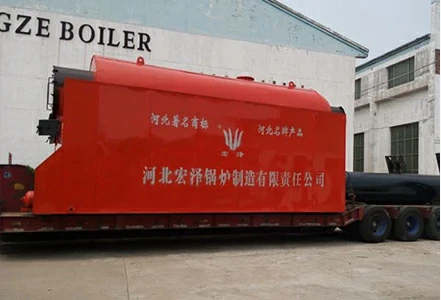
Nov. . 20, 2024 06:01 Back to list
how to fix a boiler with no hot water
How to Fix a Boiler with No Hot Water A Comprehensive Guide
Experiencing a lack of hot water can be a frustrating and inconvenient issue in any household. If you find yourself in this predicament, don’t panic! There are several steps you can take to troubleshoot and potentially fix your boiler. Below is a comprehensive guide to help you diagnose and resolve the problem efficiently.
1. Check the Thermostat Settings
The first step in addressing a boiler with no hot water is to check the thermostat settings. Ensure that the thermostat is set to the desired temperature and is functioning properly. Sometimes the settings may have been accidentally adjusted, or the thermostat could be broken. If the thermostat appears to be unresponsive, consider replacing it.
2. Inspect the Boiler’s Pressure
Most boilers have a pressure gauge that indicates the current pressure level within the system. Ideally, this should be between 1 and 2 bars when the system is cold. If the pressure is too low (below 1 bar), your boiler might not function properly. To remedy this, you may need to re-pressure the system. This usually involves finding the filling loop and carefully adding water to the system. Make sure to follow the boiler’s instructions and consult the user manual.
3. Look for Visible Leaks
Inspect your boiler and piping for any visible leaks. Leaks can lead to pressure loss, which may be preventing hot water from being produced. If you notice any leaks, it’s crucial to address the source of the problem. Depending on the severity, you may be able to apply temporary fixes, but be prepared to call a professional if the damage is significant.
4. Examine the Pilot Light and Ignition
how to fix a boiler with no hot water

If you have a gas boiler, check whether the pilot light is lit. If it's out, there may be a specific procedure to relight it, which can usually be found in your boiler's manual. However, if the pilot light keeps going out, there may be a deeper issue, such as a faulty thermocouple that will need professional attention.
5. Check the Boiler Reset Button
Many modern boilers come equipped with a reset button. If your boiler has tripped due to a fault or error, pressing the reset button may resolve the issue. After pressing it, wait a few moments and check to see if hot water production resumes. If the problem persists, further investigation is necessary.
6. Assess Faulty Components
If all the above checks don’t resolve the issue, consider that there may be a faulty component within the boiler, such as a broken heating element or circulating pump. These components require professional assessment and often replacement.
7. Call a Professional
If you've gone through these troubleshooting steps and your boiler is still not producing hot water, it’s time to call in a qualified heating engineer. It’s important to address any boiler issues promptly, as neglected issues can lead to more significant, costly repairs or a complete breakdown.
Conclusion
Dealing with a boiler that provides no hot water can be inconvenient, but many common issues are often simple to diagnose and fix. From checking the thermostat and pressure to examining for leaks and dealing with possible component failures, there are several steps that can be taken to troubleshoot the issue effectively. However, always prioritize safety and know when to call in a professional. Regular maintenance can help prevent issues in the future, ensuring that your home remains warm and comfortable year-round.
-
How to Maintain a Steam Boiler Expert Tips for Efficiency & Longevity
NewsApr.29,2025
-
Professional Steam Boiler Service AB Expert Maintenance & Repair
NewsApr.29,2025
-
Hot Water Steam Boilers Efficient Heating Solutions & Expert Tips
NewsApr.29,2025
-
Hot Water Boiler Capacity Calculation Guide Efficient Design Tips
NewsApr.28,2025
-
How to Drain a Steam Boiler Step-by-Step Safety Guide
NewsApr.28,2025
-
How to Install a Hot Water Boiler Optimal Pressure & Efficiency Guide
NewsApr.28,2025
Related PRODUCTS






















